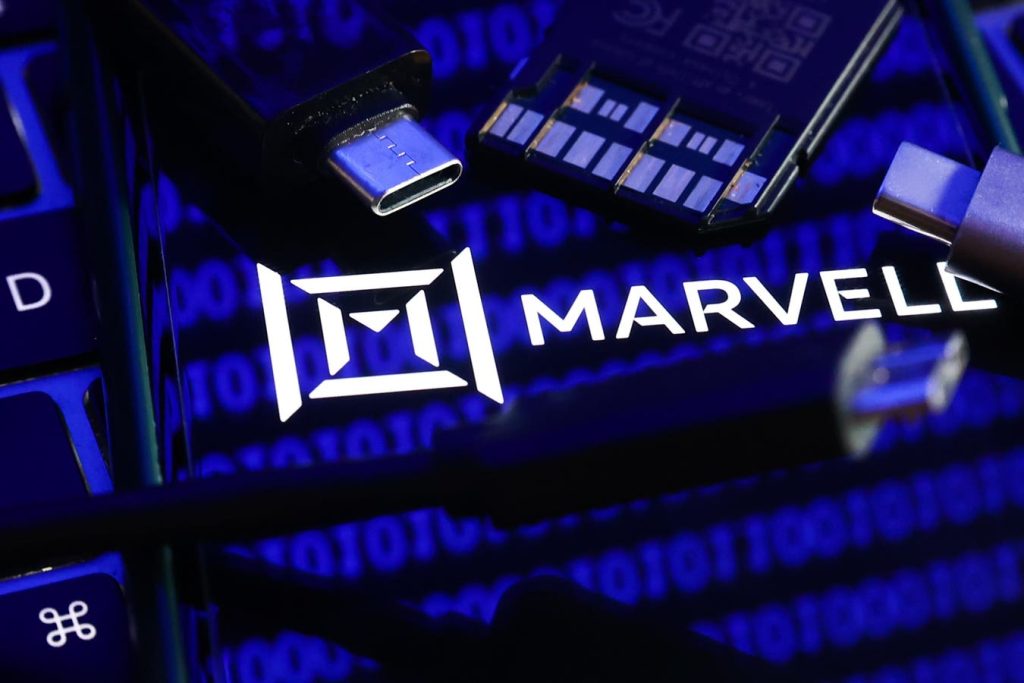Marvell’s Ascent in the AI Chip Market: A Detailed Analysis
Marvell Technology, a prominent player in the semiconductor industry, has experienced a remarkable surge in its stock price, outpacing even established giants like Intel. This impressive performance is largely attributed to the company’s strategic focus on the burgeoning artificial intelligence (AI) sector, specifically catering to the demands of data-intensive generative AI and machine learning workloads. Marvell’s success hinges on its two-pronged approach: providing high-speed interconnect solutions crucial for AI infrastructure and developing custom AI processors tailored for hyperscale data centers.
Marvell’s foray into the AI landscape began with its interconnect solutions, designed to address the bandwidth and latency challenges posed by the massive data flows inherent in AI processing. These high-speed optical and electrical interconnects are essential for facilitating the efficient transfer of information within data centers, enabling the parallel processing capabilities required for complex AI models. However, the company’s true potential lies in its development of application-specific integrated circuits (ASICs). These custom chips, unlike general-purpose GPUs offered by competitors like Nvidia, are meticulously designed for specific AI tasks, offering potential advantages in cost, energy efficiency, and performance optimization. This targeted approach positions Marvell to capture a significant share of the rapidly expanding AI hardware market.
Marvell’s recent financial results further underscore its successful transition towards an AI-centric business model. The company’s data center segment has witnessed explosive growth, propelled by the increasing demand for its interconnect and custom AI solutions. While other business segments, such as enterprise networking and automotive, have experienced declines, the overwhelming success of the data center division has driven overall revenue growth. Although gross margins have remained relatively flat due to the lower initial profitability of custom AI chips, the company’s strategic partnerships with major cloud providers like Amazon Web Services (AWS) signal a promising trajectory for future growth and profitability. These partnerships, coupled with the potential for collaborations with other tech giants like Google and Microsoft, position Marvell as a strong contender in the AI hardware space, offering an alternative to Nvidia’s current dominance.
Looking at Marvell’s valuation, the company’s stock price has experienced significant volatility in recent years, outperforming the S&P 500 in some periods while lagging behind in others. This volatility highlights the inherent risks associated with individual stock investments. In contrast, diversified portfolios, such as the Trefis High Quality Portfolio, offer a more stable investment approach with the potential for consistent outperformance. Marvell currently trades at a premium compared to its projected earnings, exceeding even Nvidia’s valuation despite the latter’s established position in the AI market. This high valuation reflects the market’s optimism regarding Marvell’s future growth potential, particularly in the AI sector. However, investors should carefully consider the inherent risks associated with such a high valuation.
Several factors contribute to Marvell’s premium valuation. As businesses increasingly prioritize the return on their AI investments, they may seek more cost-effective solutions, potentially challenging Nvidia’s high margins. Marvell’s specialized AI chips, designed for specific tasks, could offer a compelling alternative for hyperscale data centers seeking to optimize cost and performance. Furthermore, a potential shift in the AI market landscape from large, general-purpose models to smaller, specialized models could further benefit Marvell’s targeted approach. As AI model training reaches maturity, the emphasis may shift towards efficient deployment and inference, areas where Marvell’s customized solutions excel.
While Marvell’s focus on the AI market presents a compelling growth narrative, investors must also acknowledge the inherent risks and uncertainties. The company’s heavy reliance on the data center segment makes it susceptible to fluctuations in demand and potential competition from established players and emerging startups. The evolving nature of the AI market itself adds another layer of complexity, with the potential for rapid technological advancements and shifting customer preferences. Despite these challenges, Marvell’s strategic positioning, strong partnerships, and innovative product portfolio position it as a key player in the rapidly evolving AI landscape.
Finally, when evaluating Marvell’s prospects, it is essential to consider the broader context of the semiconductor industry and the macroeconomic environment. Factors such as supply chain disruptions, geopolitical tensions, and interest rate fluctuations can all impact the company’s performance. Therefore, investors should adopt a holistic approach, considering both the company-specific factors and the broader market dynamics, when assessing Marvell’s investment potential. Diversification and a long-term perspective remain crucial for navigating the inherent risks associated with investing in a rapidly evolving and highly competitive industry like semiconductors.
![Ginny and Georgia’s Paul Has Doubts Over Georgia Arrest, [Spoiler] Questions Their Sexuality](https://newsytribune.com/wp-content/uploads/2025/06/Ginny-and-Georgias-Paul-Has-Doubts-Over-Georgia-Arrest-300x158.jpg)









